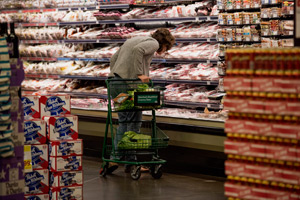Consumer Prices Rise at the Slowest Pace in Three Months

The cost of living in the United States rose in July at the slowest pace in three months, casting doubt on how quickly inflation will return toward the Federal Reserve’s goal.
The consumer price index climbed 0.1% after a 0.3% gain the month before, a Labor Department report showed Aug. 19. The median forecast of 78 economists surveyed by Bloomberg News projected a 0.2% increase. Excluding food and fuel, costs also rose less than projected.
Oil has plunged more than 30% from this year’s closing peak in June amid a global supply glut that probably will hold down inflation in the coming months. When combined with a stronger dollar and slower growth overseas, the energy slump will make the Fed’s 2% inflation target even more elusive.
“The inflation picture is pretty soft,” David Sloan, a senior economist at 4Cast Inc. in New York, said before the report. The trend is “probably a little lower than the Fed would like.”
Costs over the past 12 months increased 0.2%.
Economists’ projections in the Bloomberg survey ranged from a 0.1% decline to 0.3% increase from the prior month.
Energy costs rose 0.1% in July after a 1.7% increase in June. A short period of stabilization in energy prices appears to be over as a global supply glut that is expected to last through 2016 weighs on oil.
The average cost of a gallon of regular gasoline was $2.66 as of Aug. 17, down from this year’s high of $2.80 in mid-June, according to AAA, the biggest U.S. auto group. It had been as low as $2.03 in January
Excluding food and fuel, the so-called core index climbed 0.1% in July after a 0.2% increase the prior month. That index was up 1.8% from July 2014 after advancing 1.8% in the year through June.
Higher prices for shelter, including rents and hotel rates, are helping prop up inflation, offsetting declines in a broad stretch of categories, including air fares, new and used cars and household furnishings.
Expenses for shelter climbed 0.4%, the most since February 2007, driven mainly last month by hotel rates.
Air fares plunged 5.6% in July, the most since December 1995, showing how falling fuel costs can ripple through the economy.
The CPI is the broadest of three price gauges from the Labor Department because it includes all goods and services. About 60% of the index covers prices consumers pay for services from medical visits to airline fares, movie tickets and rents.
The Labor Department’s gauge of wholesale prices, which includes 75% of all U.S. goods and services, climbed 0.2% in July after a 0.4% gain the month before. A separate report indicated the cost of imported goods fell 0.9% last month.


